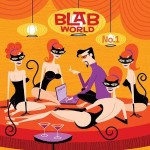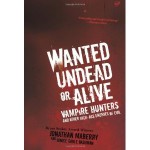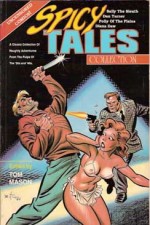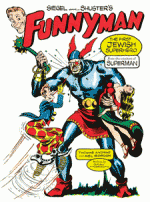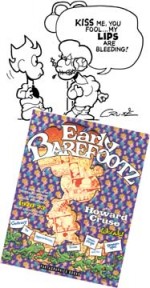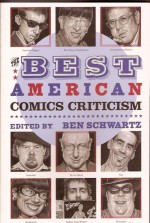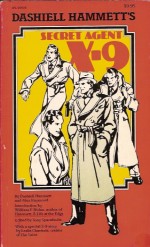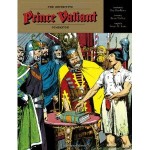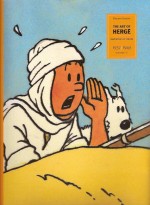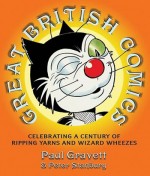
By Paul Gravett & Peter Stanbury (Aurum)
ISBN: 978-1-84513-170-3
We’re far too reluctant in this country to celebrate the quality and history of our own comic strip tradition; preferring simply to remark on the attention grabbers or impressive longevity of one or two classic and venerable holdovers when the actual truth is that for an incredibly long time the British comics and periodicals industry was vast, varied and fantastically influential.
After my now Customary Disclaimer where I admit that I know and have worked with an author or creator before, (in this case editor/designer/curator/writer/journalist/historian and genuinely brilliant dedicated devotee of all things panel-related, Paul Gravett) and admit to a possibly conflict of interest, I’d like to turn your attention fully to this truly marvellous pictorial dissertation, chronicle, memoir and celebration of the uniquely different world of comforting whimsy, raging tomfoolery, outrageous derring-do, jingoism, anarchy and class warfare that is British comics.
First released in 2006 this confabulation “celebrating 100 years of Ripping Yarns and wizard wheezes†traces the history and social impact of the medium from its earliest popular origins in such illustrated literary pamphlets as the Glasgow Looking Glass and Punch through the separation into adult and juvenile publications, prose story-papers, newspaper strip features and eventually the frenetic blend of words and drawings that we think of today as sequential art.
The book is liberally, bounteously stuffed with not just reams of illustrations but also loads of evocative photographs of the creators (for so long rendered invisible and uncredited by corporate dictat) and most importantly the generations of eager end-users who devoured these imagination-sparking treasures.
‘Lost Worlds of Topsy-Turvy’ tracks the progress of the medium and its lasting effects through an examination of nostalgia and fascination, providing an impressive overview of how and why we love these things and even including a chart marking the chronological timeline of British comics and how long they ran for. Got a favourite publication? Check it out here…
‘For Richer, For Poorer’ features the classic family and national set-up under the British class system, with examples from Alley Sloper’s Half-Holiday, The Broons, Weary Willie and Tired Tim and Posy Simmonds’ The Silent Three through to the terrifying modern icons The Fat Slags from Viz, also visiting with such varied neighbours as Giles’ immortal family, Donald McGill’s saucy postcards, Raymond Williams and the drawing room humour of Bateman, Fougasse, Heath Robinson and Reg Smythe’s Andy Capp.
The vast pictorial end-section includes further graphic examples including strips from Funny Wonder, The Joker, The Jester, John Millar Watt’s Pop, The Ruggles, The Gambols, and even such lost minor modern classics as Phil Elliott’s The Suttons makes a worthy appearance alongside more well-known strips as Alex, Bristow, The Fosdyke Saga and Colonel Pewter.
‘Spitting Images’ covers the British public’s love affair with entertainment and celebrities; spotlighting such publications as Dan Leno’s Comic Journal, Film Fun, Radio Fun, Look-In and others, with strips starring Charlie Chaplin, Arthur Askey, Laurel and Hardy, Terry-Thomas, Tommy Cooper, Norman Wisdom and The Beatles, proper heroes such as Horatio Nelson, Churchill, Isombard Kingdom Brunel, Dylan Thomas, James Joyce and Andy Murray, plus notionally lesser lights such as Troy Donahue, Adam Ant, Big Daddy, Margaret Thatcher, Tony Blair, Hitler and McFly plus so many others all rendered with tremendous skill, wit and not a little Anglo-Saxon charm and sarcasm…
‘Down on Jollity Farm’ explores our vast wealth of anthropomorphic modern fairy-tales from George Studdy’s Bonzo, Teddy Tail, Tiger Tim and the Bruin Boys, Muffin the Mule, Rupert Bear, Pip, Squeak and Wilfred, Count Duckula, Danger Mouse and Wallace and Gromit; even finding room for less savoury kiddies’ fare as the government sponsored adaptation of Animal Farm, Fungus the Bogeyman, Firkin the Cat and Savage Pencil’s punk poesy Rock ‘n’ Roll Zoo.
The anarchic animal stars of DC Thomson, Fleetway and Odhams Press are represented by such wild and woolly class acts as Kid Kong, The Crows, Sid’s Snake, The Three Bears, Mickey the Monkey, Mighty Moth and my own personal bete noir-et blanc, Reg Parlett’s fabulous Mowser the Priceless Puss…
Our preoccupation and virtual obsession with school days is made manifest in ‘Wheezes in the Tuck Shop’ examining the range of educational experience from Billy Bunter and Just William to The Bash Street Kids and the Swots and the Blots, and includes little gems such as Oor Wullie, Lord Snooty and his Pals, Nipper, Dennis the Menace, Roger the Dodger, Winker Watson, Baby Crockett, Sweeney Toddler, and Johnny Fartpants yet still finds room for such unconventional problem children as Ken Reid’s The Nervs, Dare-a-Day Davy and Faceache, Lew Stringer’s Tom Thug and Stephen White’s Dreadlock Holmes.
British kids of all ages have always been captivated by weird worlds and fantastic futures and ‘Things to Come’ traces the development of the science fiction and fantasy strips in the children’s papers from Tom Wilkinson’s fantastical Professor Radium, through such adventure stalwarts as Swift Morgan, Captain Conquest, Jet-Ace Logan, General Jumbo, Robot Archie, Rick Random and all the rest, with all appropriate attention paid to the iconic Dan Dare and Judge Dredd whilst still finding time and space for the likes of Jeff Hawke, the Trigan Empire, and such TV titans as Dr. Who, Thunderbirds, Stingray, Fireball XL5 and such truly groundbreaking strips as V for Vendetta and The Amazing Mr. Pleebus.
If you’d been paying attention instead of staring out the window you might have noticed that all the above cited specimens in ‘Wheezes in the Tuck Shop’ were boys, but don’t think we’ve forgotten the weaker sex (I just checked and there still isn’t an emoticon for trenchant, bitter irony); they just get a section all to themselves in ‘Jolly Hockey Sticks to Sheroes’.
Ladies and girls in comics haven’t always been well-treated. That’s more because the material was mostly created by men not women rather than for any male militant or subversive agenda. However the wealth of strips produced over the decades usually makes up in sheer visual quality what it might lack in relevance or political correctness.
This chapter delves into the female experience through full-on action stars such as Modesty Blaise, Lady Penelope, Judge Anderson and Tank Girl, thoroughly Modern Misses like Three Girls in a Flat, Carol Day, Tiffany Jones, Beryl the Bitch and Tamara Drew and the best from a century of unrepentant glamour pusses from Jane to the inimitable Arthur Ferrier’s assorted dazzling “Dizzy Damesâ€.
Those all important school days are covered with outings ranging from the little darlings of St. Trinians, to Bunty, Misty, an assortment of ballerinas, gymnasts and orphans and such daring vengeance-taking teams as the Silent Three and The Four Marys. Not-so-Good-Girls include Beryl the Peril, Pansy Potter (…the Strong Man’s Daughter), Keyhole Kate, Minnie the Minx and the formidable Bad Penny.
This compelling compendium concludes with a chapter on the broad spectrum of fantastic adventure heroes and the anti heroes we Brits have always seemed more comfortable with. Exemplars include The Spider, Marvelman, Chang the Yellow Pirate, P.C. 49, Captain Pugwash, Morgyn the Mighty, Desperate Dan, historical bravos like Robin Hood, Dick Turpin, Captain Blood, detectives including Sexton Blake, Blackshirt, Tug Transom, Buck Ryan and Romeo Brown, and a sporting pantheon which includes the Tough of the Track, Wilson – the immortal Man in Black, His Sporting Lordship, race car ace Skid Solo and of course the legendary Roy of the Rovers.
The British love of combat is represented by Biggles, Battler Britton, V for Vengeance, Charley’s War, Darkie’s Mob, the fearsome Captain Hurricane and a selection from the long running Commando Picture Library among others, western strips by Tony Weare, Denis McCloughlin, Robert Forest and Frank Humphris, and our frankly skewed take on superheroes is displayed in and counter-pointed by examples including House of Dollman, Frankie Stein, Jonah, Grimly Feendish, The Cloak, Charley Peace, Yellowknife of the Yard, Kelly’s Eye, Janus Stark, the Steel Claw, Billy the Cat and Captain Britain.
If you’re a lover of epics there are also stirring reminders of the spectacular grandeur of Michael Moorcock and Ron Embletons’s Wrath of the Gods, Wulf the Briton (Mike Butterworth and Embleton) and Tom Tully and Frank Bellamy’s Heros the Spartan…
Whilst not too detailed this splendid tome contains a magical abundance of images and information and presents them in a welcoming torrent of bite-sized facts and gloriously moving pictures pages that no old fan could resist and which cannot help but beguile and intrigue the unconverted. This is a perfect introduction to the medium and could almost act as a shopping list for any publisher looking to find the next big thing to bring back.
Just imagine: brand new collections of any or all of these immaculate confections…
© 2006 Paul Gravett and Peter Stanbury. All Rights Reserved. All artwork © its respective owners and holders.
